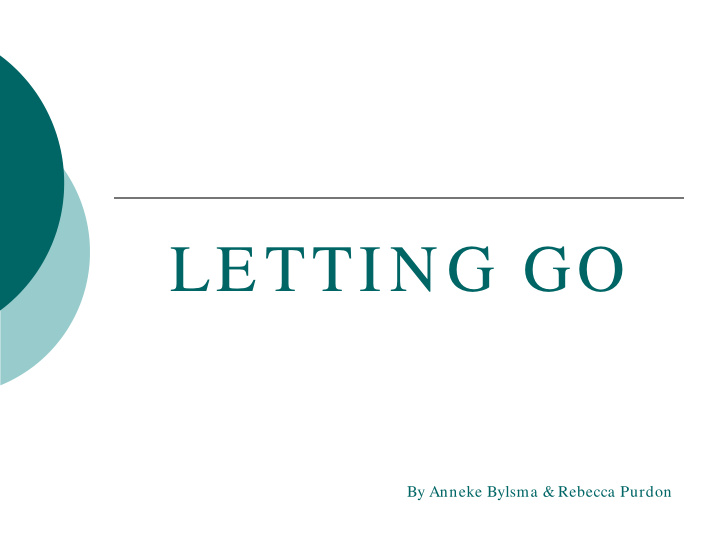



LETTING GO By Anneke Bylsma & Rebecca Purdon
US – Th e Team @ TRK Whangarei Northland –The Winterless North • We are a secondary Mental Health Service and our team consists • of Administration Psychiatrist, Registrars, Registered Nurses, Psychologists, Occupational Therapist and Social Workers We have integrated MDTs with Oranga Tamariki (Child Youth and • Family) and Mahi Tahi (The governing body of primary services) We also have MIMHs and PPS under the Te Roopu Kimiora • umbrella and are able to integrate the benefits of our services when needed The service covers the entire Northland, however there are 3 • separate teams across this area who all work separately.
Th e Ser vice Whangarei Cliental Ethnic Breakdown NZ/ European 47.5% Maori 25.1% Not recorded 21.8% Pacific Islander 2.4% Other 1.5% Asian 1.2% African 0.3% The service is catered to see the top 3% however we are currently seeing approximately 7% -this is why letting go is so important and something we always need to work on getting better at
Wh at ar e t h e p r in cip als of Le tti n g Go ? The CAPA activity of ‘letting go’ refers to the case closing and ending • of an episode of care, where the young person and their family/whānau transitions out of the service. The ability to let go is important in helping children and young people • and their family/whānau to regain control of their lives; and assists teams to achieve a smooth flow through their services. Letting go should not be thought of as an ending, but a beginning. • Having a systematic approach to letting go and understanding the • CAPA service model and all its elements is essential in assisting services to meet the needs of children, young people and their families/whānau. What’s going on for the client and their whanau •
Wh at h old s u s back fr om Le tti n g Go ? Not setting goals and or using care plans • Not trusting the whānau or young person to be able to • continue after discharge Not doing the work on issues that are goal focused or Finding • more ‘issues’ to work on Establishing a co dependence • Parents (unrealistic) expectations • Attaching to the client • Risk • Other agencies requesting of on-going MH service • Build up of reliance to services •
Wh at is t h e r ealit y of Le tti n g Go ? Negatives Can be hard • Paperwork • Resistance from other services • Resistance from client or family • Positives More room to work with others • Highlighting the work the YP has done • Empowering to the client and their Whānau •
H ow can we be bet t er at Le tti n g Go ? Having achievable goals that steam from the needs of the • client and their whānau Being open about the process and plan from the start • Using the sessions to focus on growth and forward momentum • Measuring progress and giving this feedback • Making the letting go a win for the client • Having the MDT backing • Bring up the topic regularly • Having the whānau involved and aware of the letting go plan • Setting review sessions • Use our therapeutic skills and engaging the whānau and client • Having confidence in your own ability. You are the clinician! •
QUESTIONS?
Recommend
More recommend